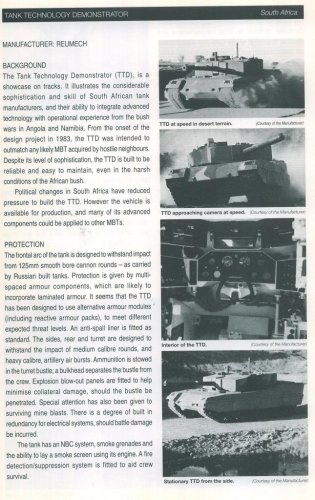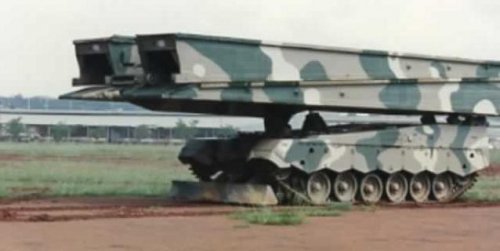- Joined
- 18 March 2008
- Messages
- 3,529
- Reaction score
- 950
The “optimal” is actually the Denel LIW prototype for the Mk 2 Olifant upgrade. It has had the hunter killer sight system removed which had me confused for a few web posts thinking this was a late 80s era product. This is still an original, albeit heavily modified Centurion Mk 5 turret under the upgrade. You can actually still see part of the original turret in front on photos of this vehicle.
The upgrade included the LIW GT8 105mm gun that can be swapped out for a 120mm smoothbore ordnance. Denel lost the contract for the Mk 2 upgrade to BAE Alvis so this vehicle was never realised. The Mk 2 requirement also included a more powerful engine so that would explain the new exhaust ports.
Denel also have a significant turret and large calibre gun design and production business so it is no surprise they might have designed and offered the Mk 2 turret upgrade for the Chieftain and/or a new build turret. But this is not it.
This is what the Denel Optimal looked like in its glory days.
The upgrade included the LIW GT8 105mm gun that can be swapped out for a 120mm smoothbore ordnance. Denel lost the contract for the Mk 2 upgrade to BAE Alvis so this vehicle was never realised. The Mk 2 requirement also included a more powerful engine so that would explain the new exhaust ports.
Denel also have a significant turret and large calibre gun design and production business so it is no surprise they might have designed and offered the Mk 2 turret upgrade for the Chieftain and/or a new build turret. But this is not it.
This is what the Denel Optimal looked like in its glory days.















































